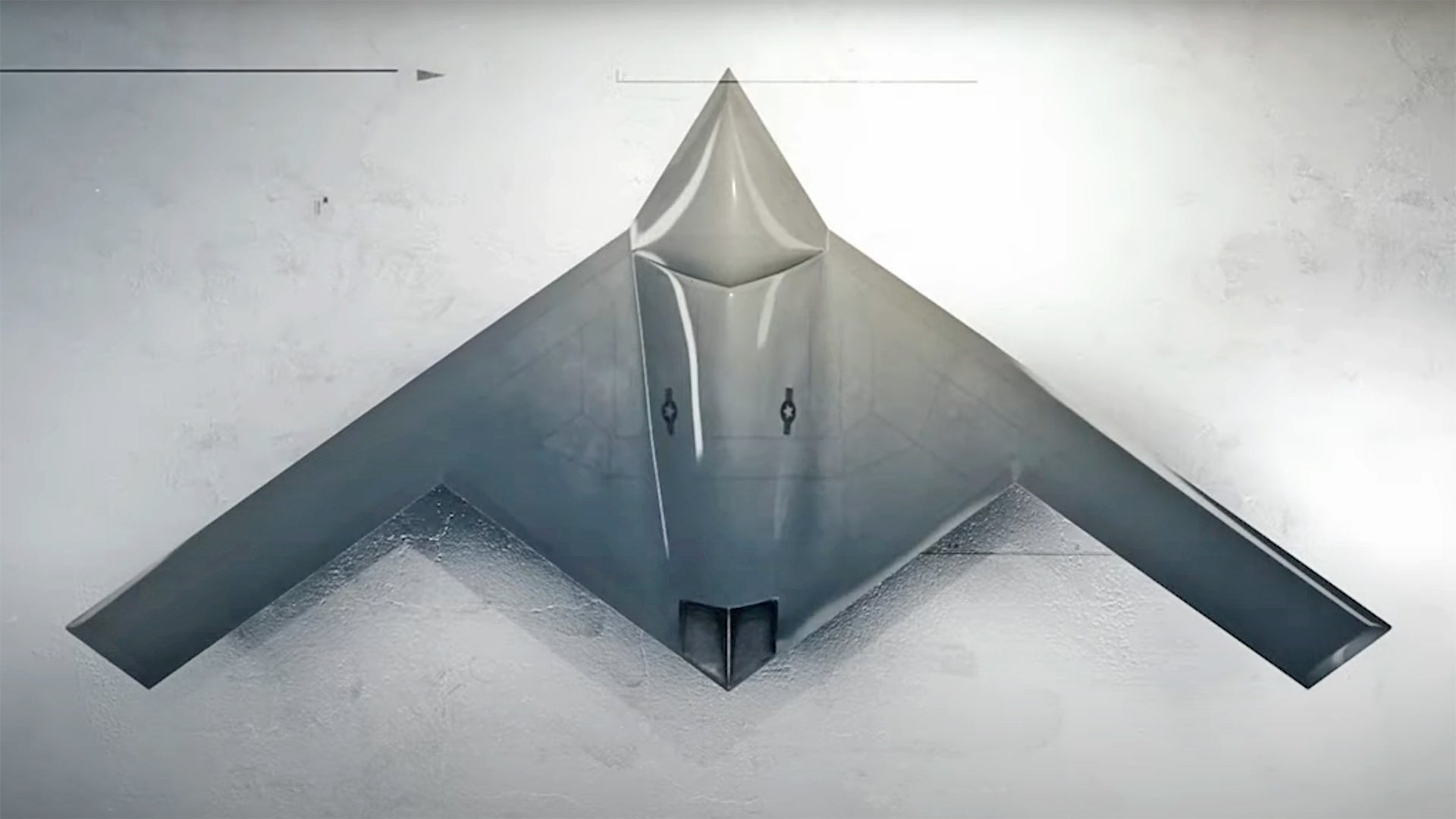It seems like the drumbeat of news regarding the existence of the U.S. Air Force’s secret ‘RQ-180’ high-altitude, long-endurance (HALE) flying-wing stealth drone is really picking up in tempo. After three sightings of such a craft, two over America’s premier flight test airspace in California and Nevada and another seemingly over the Phillippines, it seems like an official disclosure of the aircraft could potentially happen soon. Further evidence of this possibility comes directly from the Air Force’s Profession of Arms Center of Excellence (PACE).
The video, titled “Heritage Today — ISR And Innovation,” gives a quick overview of how far the Air Force’s information, surveillance, and reconnaissance (ISR) mission has come over the decades. Toward the video’s end, it shows a Global Hawk flying and boldly states, “The days of balloons and biplanes have been replaced by white bats.” At this point, it cuts to a planform image of a stealthy flying-wing HALE drone — one of the semi-cranked-kite designs we have seen in HALE sensor craft studies that emerged in the 2000s and similar to notional art posted by Aviation Week when covering the clandestine RQ-180 program (keep in mind we still do not know its real designation).

This is certainly a placeholder design, as they would not be showing off the real thing, which remains classified. Furthermore, it doesn’t match the planform of the aircraft we have seen in the air. That’s not to say that there is only one HALE stealthy flying-wing drone configuration flying these days, but that is another story. China is also pursuing a similar design under the CH-7 ‘Rainbow’ designation.
Regardless, there is really no room for coincidence here. The “white bat” reference has no place in ISR parlance outside of the RQ-180. Not only does this fit the physical description of the stealth drone we have now seen repeatedly, but its own nickname and its associated unit iconography supposedly directly reference this.
According to a report from Aviation Week, which has since been reinforced by additional sources, the aircraft’s nicknames, even if unofficial, are “Great White Bat” and “Shikaka.” Shikaka is the name of a fictional sacred white bat that is at the center of the plot of the 1995 Jim Carrey comedy Ace Ventura 2.
More recently, Aviation Week reported that the Air Force had stood up the 74th Reconnaissance Squadron at Beale AFB, Calif., in 2019 to operate the RQ-180, at least remotely. This unit’s insignia features a large white bat that fits perfectly with the RQ-180’s reported nicknames.

So, what can we make of this? It’s quite stunning that such specific dialogue and imagery would be inserted into an official video in this way. Really, it is the closest thing we have to actual confirmation of what is bound to represent a major revolution in airborne ISR as well as battlefield communications and networking. You can read all about that in our massive feature on just what this platform is likely to bring to the table.
It is impossible to predict when the USAF will finally openly discuss its stealthy flying-wing HALE drone program, but this system is related to the B-21 Raider and the ecosystem of penetrating capabilities also being developed around it. With the B-21’s unveiling not too far off into the future, we could get some sort of acknowledgment that this aircraft exists around that same time. Then again, it could come even sooner, or far later on, once the aircraft and its underlying support infrastructure are fully operational. This may still be years away, long after the aircraft is flying real-world missions. We saw a similar developmental path for the Global Hawk, which we know this aircraft will at least partially replace.
Still, the Air Force is now clearly laying big breadcrumbs as to the existence of the “white bat.” This is not done without reason. As the operations of this aircraft expand, it will become harder to hide it from the public anyway, especially considering its long-endurance capabilities, so some sort of disclosure may become a necessity in the near future.
Contact the author: Tyler@thedrive.com
